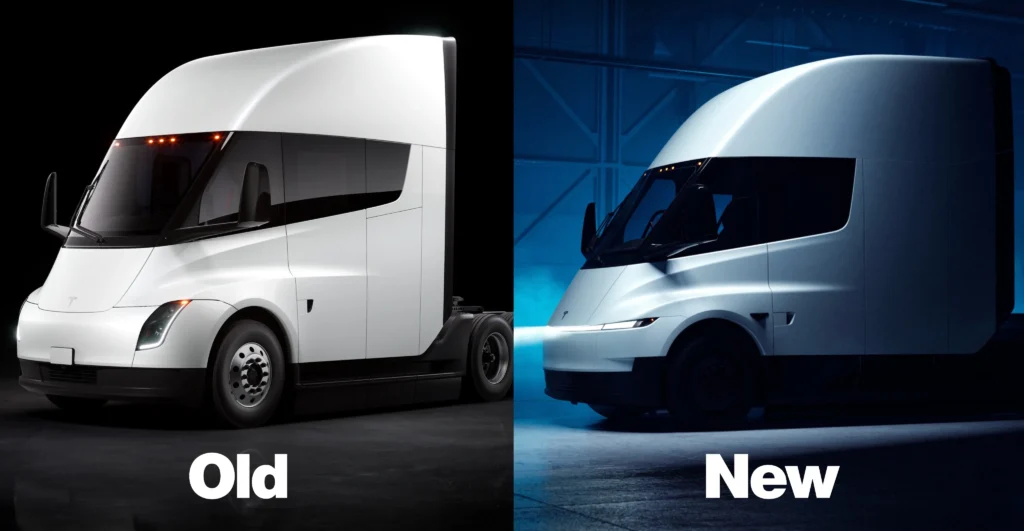Tesla’s Semi now has a sharper nose and a light bar that fits with its current car look. The new headlights match what you see on the latest Model Y and Cybertruck. The mirrors, windshield, and front bumper now help cut air drag. Because Tesla changed the roof and shape, the big electric truck uses less energy each mile. The redesign was first seen at Tesla’s annual meeting in November 2025, and side cameras for driver assist are easy to spot.

Tesla confirms the Semi will use its new 4680 battery cells in future builds and the long-range model has an 800 kWh pack with nickel-rich NMC chemistry, and the short-range version uses cheaper lithium iron phosphate. These cells help keep energy density high, costs lower, and heat stable so the truck gets up to 500 miles with one charge.
The Semi runs on three motors connecting to the rear axles and the truck pulls up to 82,000 pounds when loaded. During tests, it covered 370 to 420 miles on most of its battery, though Tesla rates it for 500 miles under ideal use. It goes from 0-60 mph in 20 seconds when loaded. Unloaded, it gets there in 5 seconds. The Semi charges to 70% in only 30 minutes using Megacharger stations. Drivers can expect about 1.7 kWh of energy use for every mile traveled.

Built for autonomy
Full Self Driving gear comes standard. The new design gets ready for complete hands-free driving once laws and software catch up. The truck uses improved cameras, sensors, and driver assist to stay safe and alert on highways.
Tesla’s new plant in Nevada aims to make 50,000 Semis a year by late 2026. Right now, there are dozens of Semis working in real fleets like PepsiCo and DHL. Mass orders for anyone open in 2025, after big carriers run more field tests. The latest estimates say at least 10,000 units could ship by the end of next year.
Lower cost for drivers
Tesla claims the Semi will save carriers near $200,000 in fuel alone in three years. Earlier, the Semi listed for $150,000–$180,000. Range and specs may change final pricing. New assembly tricks and battery tech should keep costs steady for buyers while still hitting performance goals.
Tesla grows its Megacharger network for faster fill-ups. Major sites near shipping ports will make charging easier for truckers on long routes. PepsiCo, DHL, Walmart, and other testers report the Semi is efficient and reliable in daily use. Most say the truck carries full loads well and needs less energy than diesel.
Electric trucks become common
Now, more companies and regions ask for clean freight options. The Semi faces new competition from Daimler, Volvo, Windrose, and BYD. Tesla’s lead comes from long range, strong motors, and big energy savings. Still, as battery tech gets cheaper, more carriers plan electric fleets for delivery and long-haul work.
Tesla’s Semi now offers improved range, strong hauling ability, savings in every mile, and a design ready for the future. Mass production kicks off in Nevada in 2026, and the new model sets a new standard for electric trucking.
You may also like to read:
- Tesla to Build New Megacharger Facility for Semi Trucks in California »
- FSD-Ready Tesla Semi: Truck Seen Sporting Sophisticated Sensor Array »
- Tesla software rollout brings new 3D icons and mapping »




